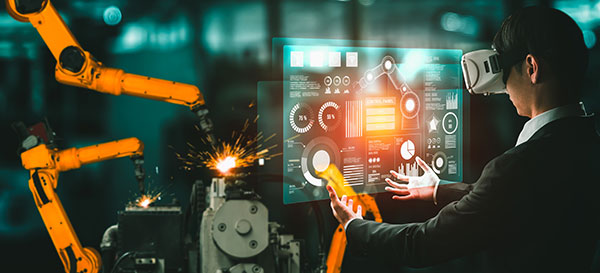Investment in automation is essential for U.S. SME manufacturers to compete in a post-COVID marketplace.
by Param Singh, Vice President of Investment Banking, Oberon Securities
Automation has transformed how businesses operate and compete. Yet when it comes to manufacturing, there is a glaring disparity in technology adoption, particularly between the United States and its international counterparts. Asian manufacturing hubs like Japan and South Korea have enthusiastically embraced automation, leading to increased efficiency, cost savings, and improved product quality. American manufacturing, especially at the small and medium enterprise (SME) level, has been slower to adopt automation technologies. To remain competitive and innovative, it is important for government organizations to develop unified policies that support investment in automation.
Historically, SMEs in the United States leveraged their size and agility to lead innovation and the implementation of new technologies. Larger, slower enterprises compensated by acquiring small businesses to integrate newly developed innovations into their ecosystems.
Over the decades, however, larger businesses with capital became innovation hubs. SMEs fell into a vicious cycle: they lacked the resources to conduct research and development (R&D), and it became increasingly difficult to implement new technologies developed externally. SMEs lost competitiveness and the price/cost equilibrium that allowed their products to remain competitive. Many family-owned enterprises are easy targets for financially motivated investors with access to capital and can implement much-needed operational changes.

According to a 2021 report by the International Federation of Robotics (IFR), which measures manufacturing automation by the number of robots per 10,000 employees, six of the top ten countries for robot density were in Asia, with South Korea, Singapore, and Japan taking the top three spots. South Korea has held the top spot since 2010 and has a robot density seven times higher than the world average.
Each of the top three countries has also demonstrated a commitment to making it easier for SMEs to adopt and implement new technologies and automation. South Korea’s Digital New Deal included a pledge to invest $4.8 billion USD in data, networks, and artificial intelligence (AI), with additional investments to support SME technology adoption. Japan introduced the IT Introduction Subsidy to provide grants to SMEs in various sectors, including manufacturing companies. In addition to the SMEs Go Digital program to promote the adoption of advanced digital technologies, Singapore also introduced measures to support digital transformations totaling $359 million USD. While these countries’ high technology adoption rates can’t be attributed to a single factor, the investment in and support of SMEs likely plays a significant role.
In the United States, the Creating Helpful Incentives to Produce Semiconductors and Science Act (CHIPS Act) aims to boost domestic semiconductor manufacturing and other cutting-edge technologies. The Build America, Buy America Act (BABAA) requires federally funded infrastructure projects to use materials produced in the United States. Unfortunately, both lack any specific support for SMEs.
To adequately address the automation and technology gap in manufacturing, the United States needs a unified policy to support innovation and adoption at the SME level rather than the current piecemeal efforts. A unified policy should ensure access to capital across regions and sectors and provide resources such as education and connections within the value chain. World Economic Forum data supports this kind of policy framework; in a 2021 survey, financial concerns were the most common barrier to technology adoption and innovation for SMEs, including a lack of government support during the COVID-19 pandemic. A deficit of industry standards also discourages investment in digital technology.
Adopting automation technology may seem like a significant investment, but there are benefits, especially to SMEs, including:
U.S.-based manufacturing is at a critical juncture. It risks losing competitiveness as its Asian counterparts leverage the benefits of advanced technologies and government investment to drive innovation and efficiency. Failure to adopt automation hampers productivity and limits the ability to respond to the market with agility. Opportunities to increase automation also offer a chance to control the impacts on employees. By investing in people who can develop, customize, and implement automation and technology solutions, organizations will create new, well-paying jobs and safeguard their competitiveness in the market.

About the Author:
Param Singh is Vice President at Oberon Securities and has over 12 years of experience empowering clients and teams to overcome their challenges. He specializes in strategic advisement for industrial and manufacturing businesses. Param holds an MBA and Master of Science in Environment and Sustainability from the University of Michigan. He earned his post-graduate diploma in alternative dispute resolution from NALSAR University of Law and Bachelor of Engineering degree from the University of Delhi.
Disclaimer: The opinions expressed in this article are those of the author. They do not purport to reflect the opinions or views of Oberon Securities.
In this episode, I sat down with Beejan Giga, Director | Partner and Caleb Emerson, Senior Results Manager at Carpedia International. We discussed the insights behind their recent Industry Today article, “Thinking Three Moves Ahead” and together we explored how manufacturers can plan more strategically, align with their suppliers, and build the operational discipline needed to support intentional, sustainable growth. It was a conversation packed with practical perspectives on navigating a fast-changing industry landscape.